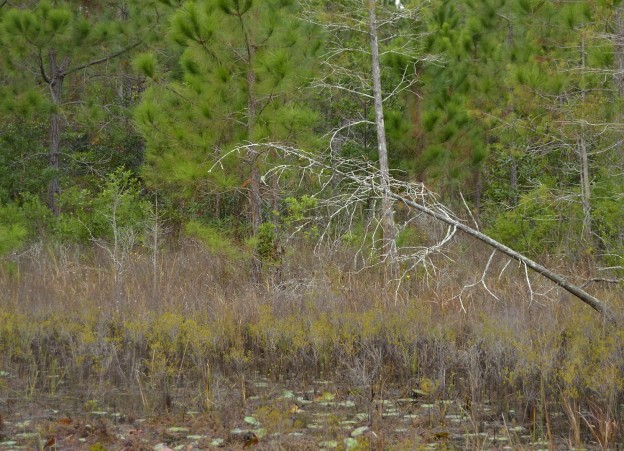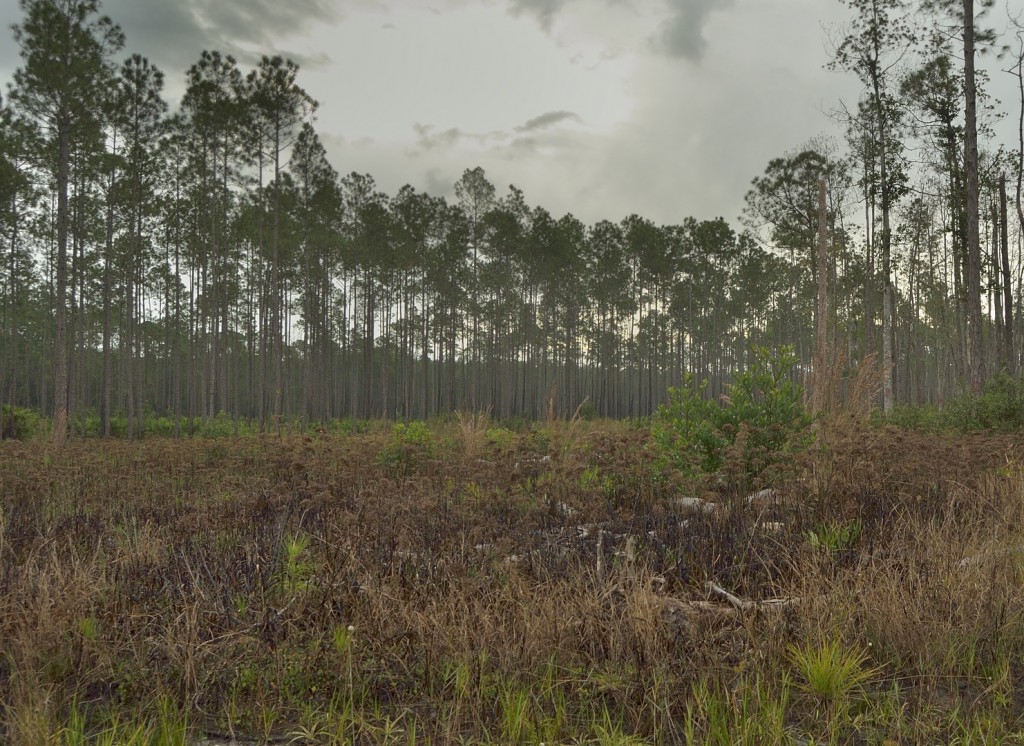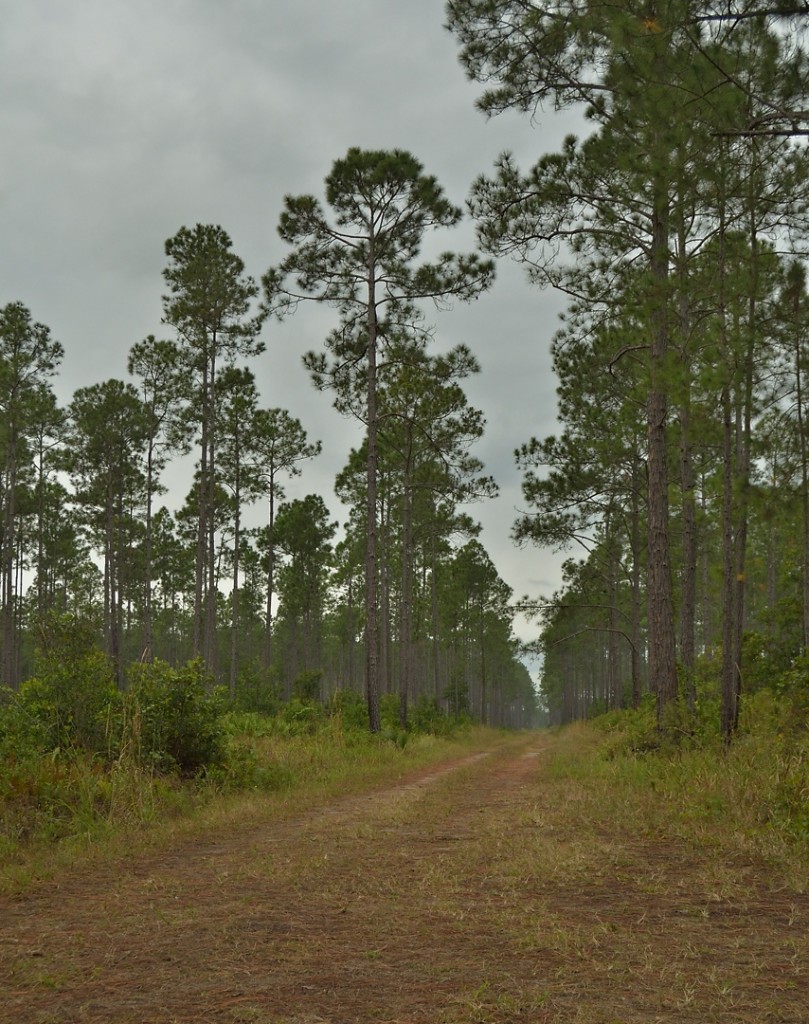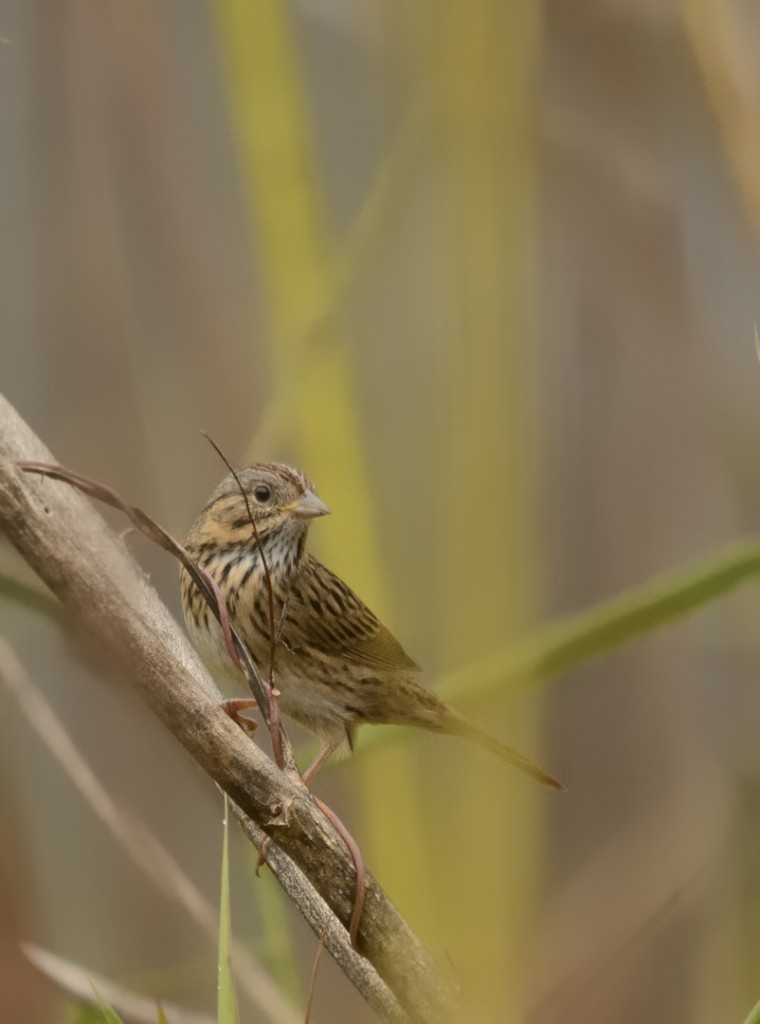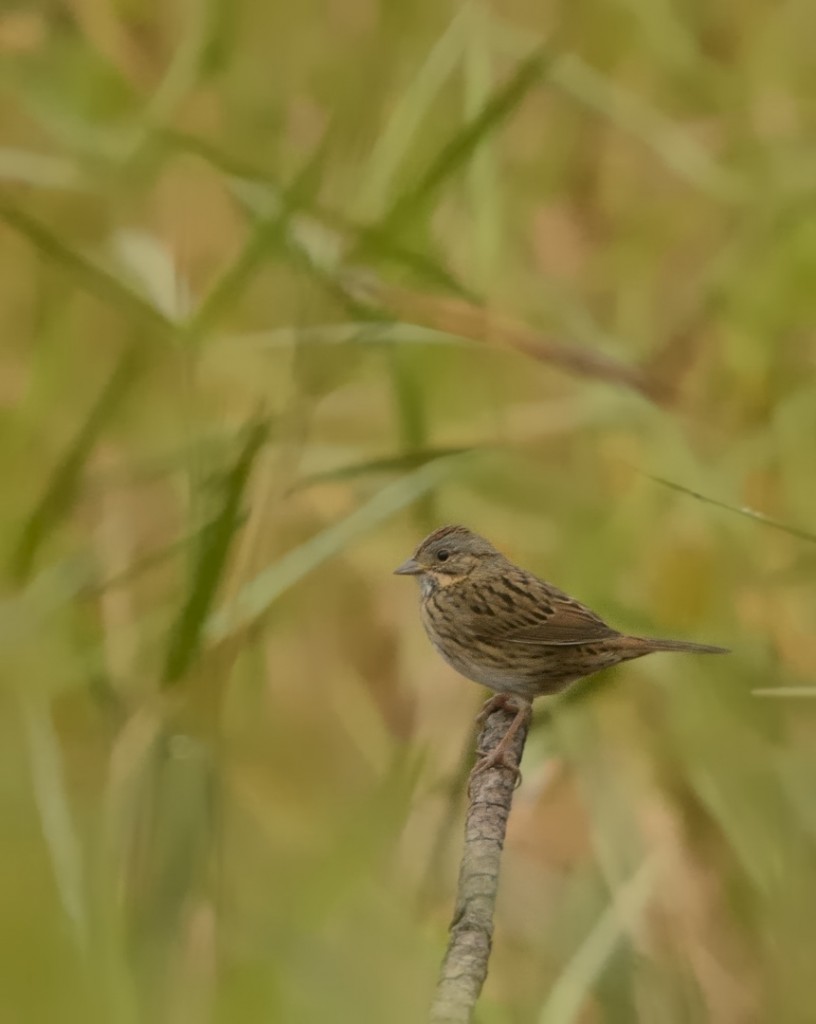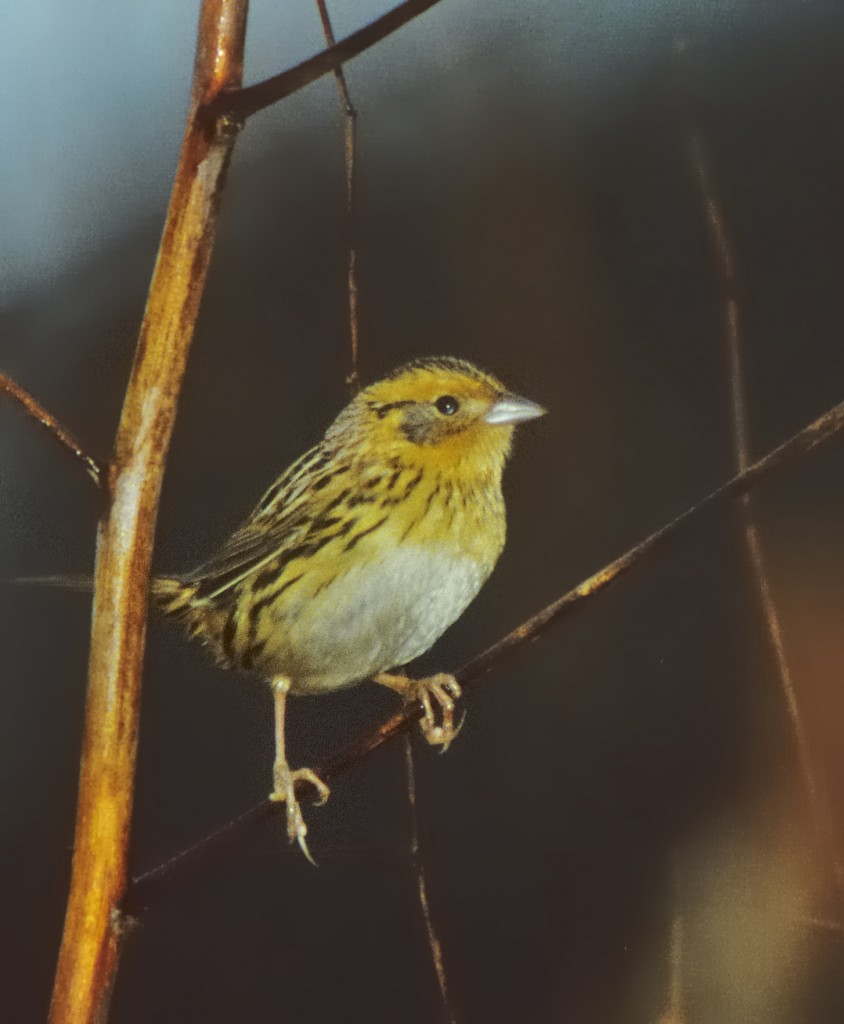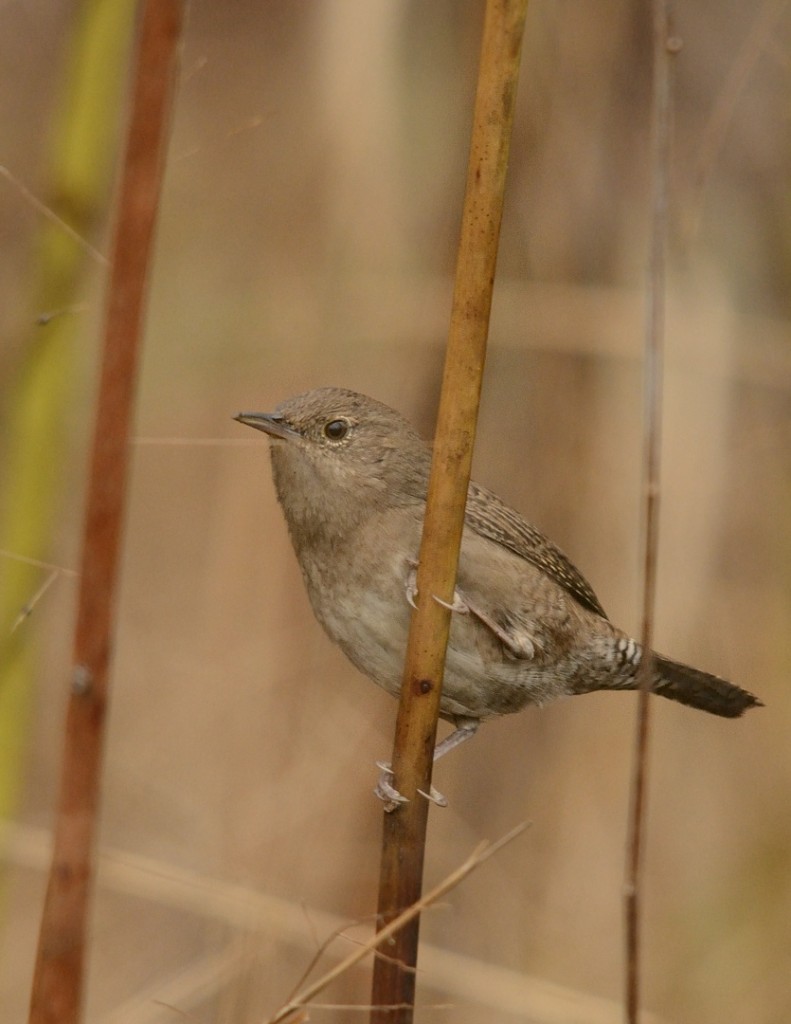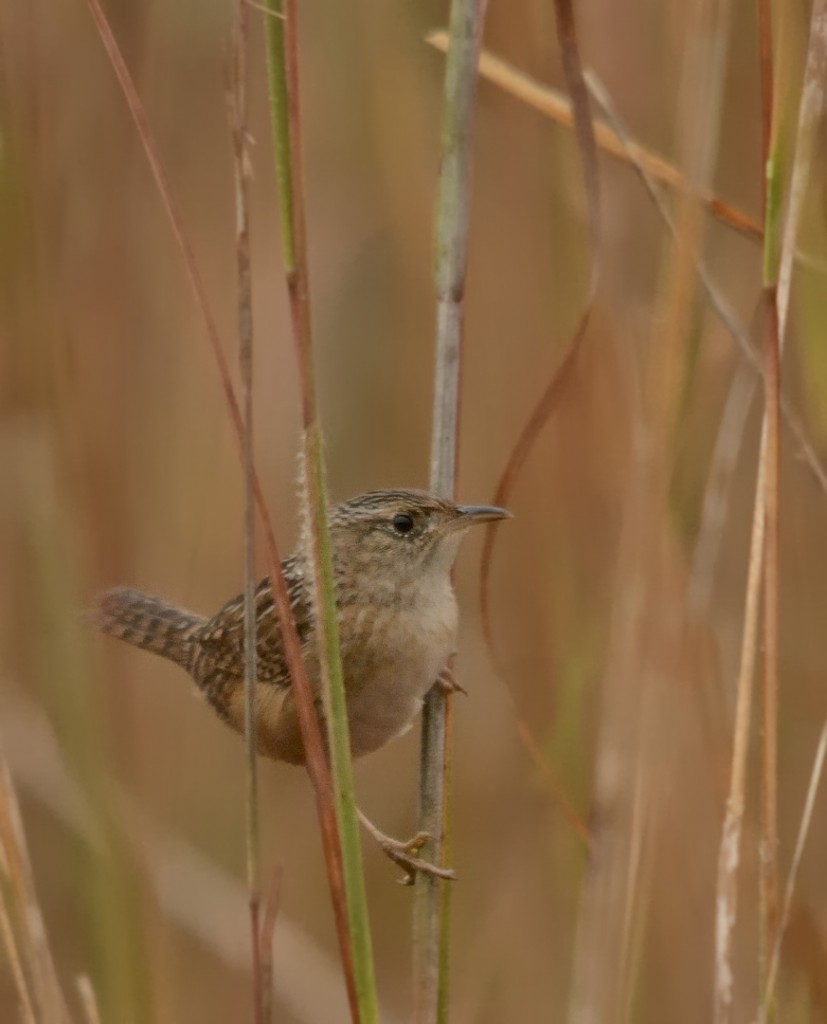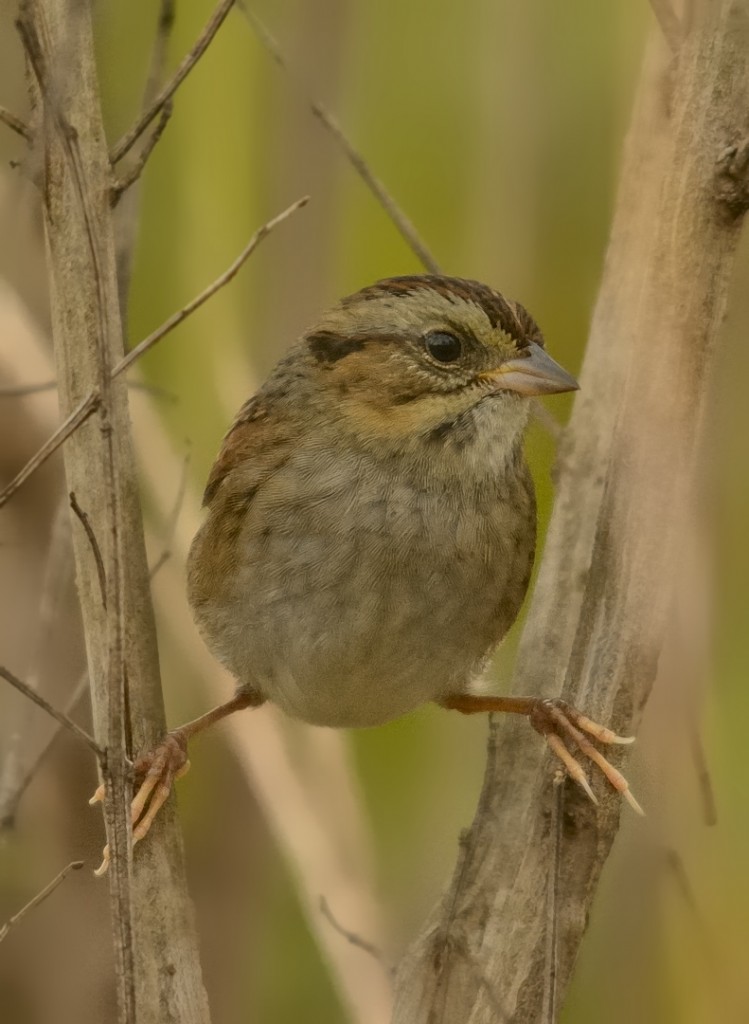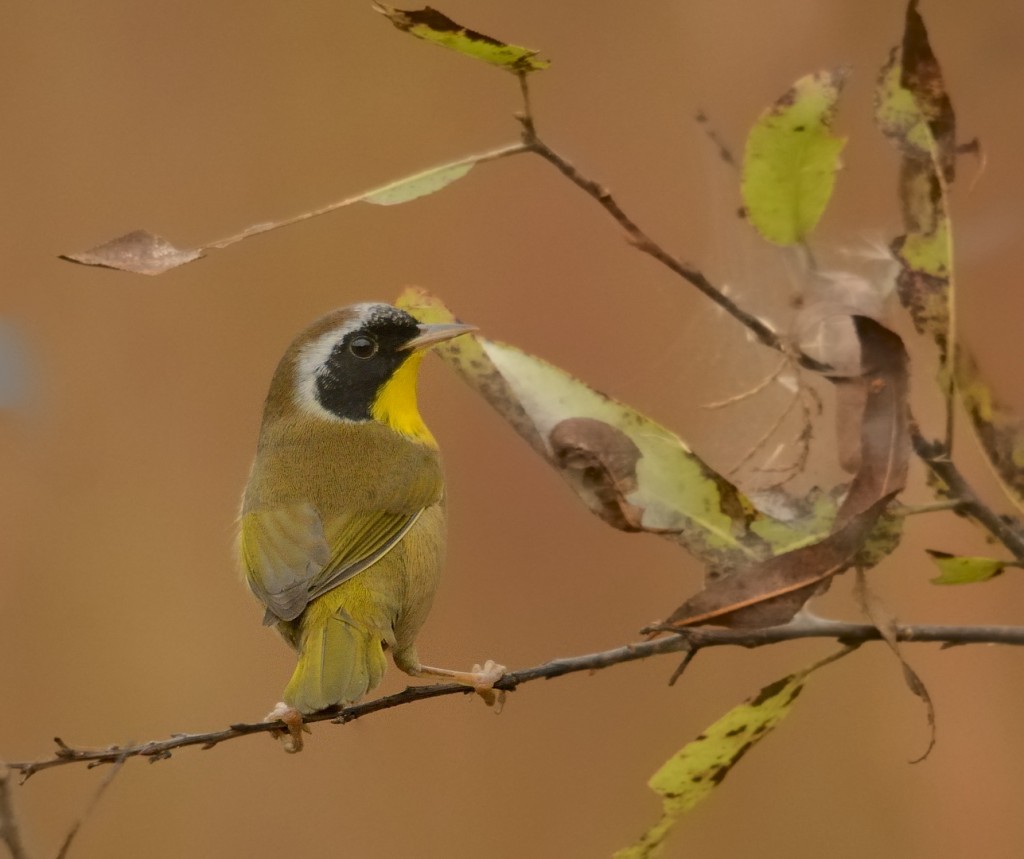November 15, 2013
There was a sliver of open sky hinting at a glorious sunrise on the horizon when I left home, but by the time I got to Tiger Bay, no more than fifteen minutes later, it was a memory. Leaden skies, with no hint of optimism about them. Skies like these could have come straight from the prose of The Road, Cormac McCarthy’s minor masterpiece. Well hell, they’re all masterpieces, aren’t they, minor or major. Who am I to label? A compelling novel whose main character is a depraved necrophiliac engaging in Davian behavior, including the cave – are you kidding me? Child of God indeed, coming soon to a theater near you.
So as I drove up the charming brick road leading into the north entrance of Tiger Bay State Forest, I was a bit bummed. My mellow had been slightly harshed. No glorious early morning light to be had this morning. I was questioning whether it would brighten enough for any photography at all. Melanins were to be the theme of the day. Melanins are the class of pigments that give vertebrates their neutral tones; in the feathers of birds, they span the range from blacks and grays to rusty browns and everything in between. The skies were seemingly tinged with melanins this morning, and as it turned out, the great majority of birds I saw followed the sky’s lead.
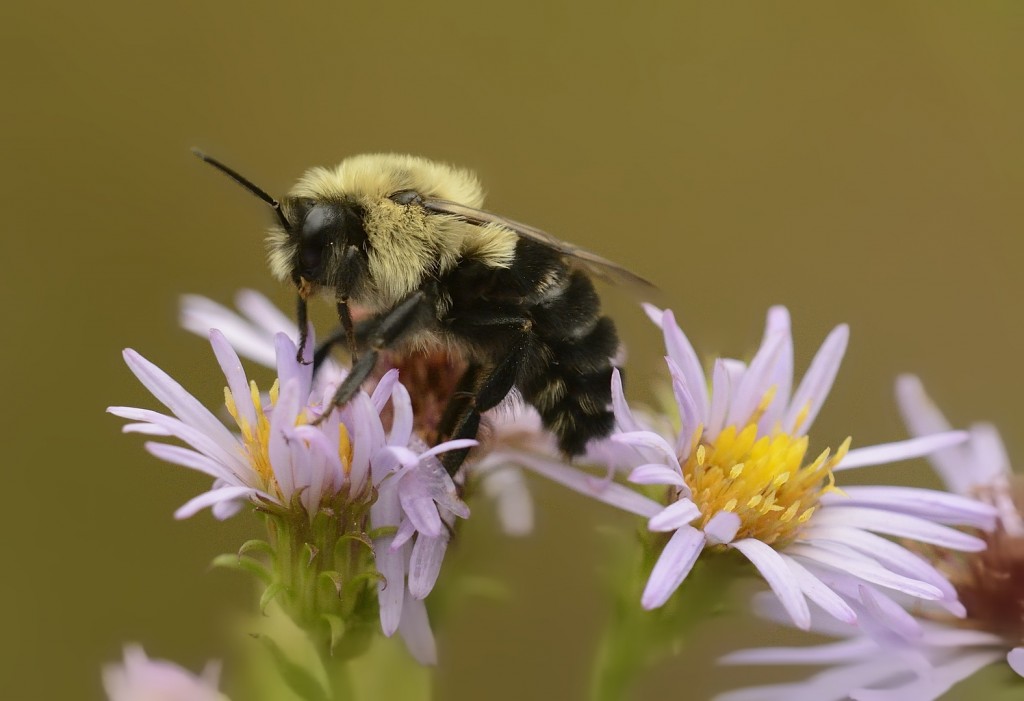
The gray, cool conditions suppressed most insect activity. Even these little bumblebees were moving incredibly slowly as they nectared on the asters.
At the intersection of Gopher Ridge Road and Dark Entry Road (oooh, spooky!), in the southeast quadrant, there is a stand of maybe a couple hundred acres that was modified several years ago by the foresters at Tiger Bay. This area, formerly dense young wet flatwoods, had been most notable to me for years because of the large numbers of hooded pitcherplants, Sarracenia minor, that flowered each spring along the roadside ditches and depressions. It was never particularly remarkable to me for birds until the land managers severely thinned the pines and cleared most of the thick undergrowth. Now, several years later this stand has the feel of a pine savannah, and is often loaded with great birds, including red-headed woodpeckers, eastern bluebirds, Bachman’s sparrows, northern flickers, and so on. It’s a wonderful demonstration of the power of effective habitat management. But this morning it was as empty as McCarthy’s road. I heard a sedge wren chitting from a dense clump of broomsedge and forbs, but the light was so dismal I didn’t even think about photography.
Further east on Dark Entry, past the savannah, the young flatwoods become denser. But the foresters have been at work in that section recently as well, thinning and opening up the understory in patches. At one of these patches, a few acres of cleared land now supporting a successional field, I found a large stand of Sesbaenia vesicaria, a weedy legume that can get 6-8’ tall in good conditions. It’s not too dense a thicket for seeing birds, but provides enough cover that even skulky birds feel secure there. A bit of chattering told me a house wren was in the thicket, so I began a bit of low-level pishing and playback, using just a chickadee scold call. Response was slow to develop, but within a couple of minutes I saw a couple of birds moving around the back of the thicket, tending in my direction. One seemed a bit dark for a house wren, but I didn’t pay it much attention at first. Everything seemed dark this morning. Eventually it moved to an only semi-obscured perch and I was able to get bins on it.
Shock. And delight. It wasn’t a wren. It was a Lincoln’s sparrow. This is a bird I see on very rare occasions. I had never seen one before I came to Florida, though they pass sparingly through northern Virginia, where I began birding. I had lived and birded in Florida for over 20 years before I saw my first one here. It wasn’t until I began doing weekly bird surveys at Emeralda Marsh Conservation Area back in 2000 that I saw my first. Lincoln’s sparrows were regular, but rare, migrants and winter residents in the wet thickets of Emeralda; I saw them on perhaps 10 occasions there during the 7 years I did censuses. I had only seen one outside of Emeralda, and that was also at Tiger Bay, in a thicket by the canal that parallels the South Entrance road that takes you to Rattlesnake Pond. Thickets and nearby water seem to be a common theme to all of those sightings. Similarly, this morning’s LISP was in the Sesbaenia thicket, which was less than 20 yards away from several small depression ponds.
What an elegant little sparrow. But what a recluse. That was my experience at Emeralda as well; rarely did I get unobstructed views or photo ops with Lincoln’s. After thoroughly intoxicating myself with lovely binocular views of this dapper dude, my thoughts turned to shooting it, if only for documentary purposes. Didn’t seem likely, as he was still way too distant for decent shots, and completely or partially blocked by vegetation about 90% of the time. Eventually he did give me a couple of distant and brief photo ops, and in the last, he was completely exposed on an open perch surrounded by maidencane. Not the frame-filling fantasy shots I had visualized (yeah, like those visualized fantasy shots ever happen), but good enough, with massive cropping and consequent low image quality, for decent record shots. I was as happy as a little girl. The gray morning was now glowing.
Seeing sparrows well, and in particular the less common sparrows, has that effect on me. Sparrows are tough. Seeing many of the wintering Florida sparrows clearly or regularly often involves slogging through dense cover to flush them out. My people don’t do slogging through dense cover well. Seeing the rarer sparrows is both difficult and exhilarating for me. One of the high points among my Florida birding experiences was the cold, dank, drizzly January morning that birding legend John Puschock took me to a weedy field near Bull Hammock at Emeralda Marsh Conservation Area and flushed both LeConte’s and Henslow’s sparrows, affording me killer views of both species. Two lifer sparrows within minutes of each other. Awesome.
So this morning’s Lincoln’s sparrow didn’t quite reach that level of excellence, but it was pretty damned fine. It’s kind of a funny feeling seeing what you know will be the best bird of the day the very first thing. Kind of a release – no matter what I was to see or not see the rest of the morning, I already had that peak experience under my belt for the day. And in fact I didn’t see anything else as buzzworthy as the Lincoln’s sparrow, but I saw lots of other cool birds. Even without the Lincoln’s sparrow, it would have been a totally fulfilling communion, which I should know by now. It’s always worthwhile going out to look at the real world.
Melanin-dominated birds were the order of the day. Leaving the Dark Entry pine savannah, I found the sedge wren I had heard earlier, along with a buddy. Light still sucked, but they teased me for quite a few minutes with brief glimpses and ephemeral open perching. As it turned out, sedge wrens were widespread in Tiger Bay this morning. I saw or heard them at nearly every stop with appropriate habitat. Along with their even drabber, browner cousins the house wrens.
A bit later, in one of the large clearcut tracts of drier flatwoods on the east portion of Bear Swamp Road, I found more LBJs. I had taken my Ornithology class to this section of Tiger Bay earlier in the week, and we had found both chipping sparrows and a coquettish song sparrow in the dense successional tangle of the clearcut. The song sparrow taunted us at great length, moving all around the group while chimping constantly, but giving only the most fragmentary of views. He was still in the same area this morning, still chimping, and still staying mostly hidden. A couple of congeners, however, were a bit more obliging. Two swamp sparrows ventured quite close to me, though they never fully came out into the open. I think swamp sparrows are the most understatedly handsome of our common winter sparrows, but getting clean BOAS-style portrait shots of them is no easy feat. If that’s what you’re in to.
By now, it was nearing 10 a.m., and the sky was starting to spit. Work beckoned. Which might give the erroneous impression that I actually work for a living. Gray and now damp with declining prospects for the near future. But what did I care? The little brown birds had given me all that I could have hoped for and more.
